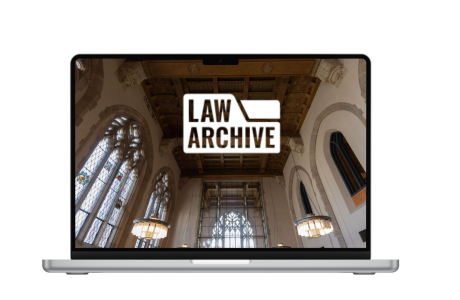Tracking & Promoting Your Scholarship: Impact factor assessment, submission strategizing, research marketing, and more!

On November 13, 2013, the law library and law teaching series co-convened a workshop on tracking and promoting scholarship. Here are some key tools and take-aways from the workshop.
1. Assessing impact factor via Washington & Lee’s law journal site:
“The Law Journals: Submissions and Ranking” site maintained by the Washington and Lee University School of Law enables scholars to gather metrics on hundreds of law journals, ranging from the ABA Journal to the Aegean Review of the Law of the Sea and Maritime Law to Yale Law Journal. The database defaults to a general search (“All Subjects”) of the current year, but targeted searching is possible and relatively easy. To expand to a multi-year search, simply click on “Access prior surveys…” in the right-hand box, and then select additional years.

Since consistently high impact is important to many scholars, a multi-year search will provide more reliable data. In addition to multi-year searching, database users can search by subject (e.g., Administrative Law), country, language, and more.
2. Tracking scholar or article citations using Hein:
Hein collects reliable citation counts of law review articles. A search for a particular article or author (e.g., Akhil Amar) quickly yields citation information.
To start, go through the Yale Law Library portal to Hein (library homepage -> HeinOnline link). Once in Hein, select the Law Journal Library. From the main search page, search the text for a scholar’s name, or search for a particular article title or author.

Each item retrieved by the search will have a checkmark and “Cited by” information. To re-sort the results by number of cites, change the Sort By box from the default (Relevance) to Number of Times Cited and click Re-Display results.
3. Tracking citations via the Web of Science
Like Hein, the Web of Science enables citation tracking via its Cited Reference Search feature.
Start at the Yale Library homepage and select Find Databases by Title. Enter Web of Science. In Web of Science, select the Web of Science tab and click the blue Cited Reference Search link. From that page, search by author and/or title to track citations. Make sure to follow Web of Science format. For instance, a search for Daniel Kahneman (author of Thinking, Fast and Slow…) is best formatted: Kahneman D*
Once you have retrieved results for a particular author and/or article, note that multiple citations to an article will likely appear (e.g., a citation to the article with the author’s name misspelled, a citation to a particular page of the article). Select them all by clicking the checkboxes that precede them, and click the orange Finish Search box below the results. This will take you to a list of articles that cite the searched article. You can select from among those articles by Web of Science categories (E.g., Economics), Document Types, etc. You can also resort the results by Times Cited via the Sort by drop-down box to the right, above the results.
For more information, see the Yale Medical Library’s Web of Science tutorials.
4. Assessing journal metrics using Web of Science: Journal Citation Reports
Scholars use JCR to strategize effective placement of articles. Tenure committees turn to Web of Science: Journal Citation Reports to assess the impact of professors’ work. Editors use JCR to assess the longitudinal resonance of their journals.
Start at the Yale Library homepage and select Find Databases by Title. Enter Web of Science. Click the Select a Database tab and choose Journal Citation Reports. From there, select into the JCR Science or Social Sciences Edition. From there, you have options… but most users of this database select a journal category (e.g., Energy & Fuels). And then you will see that category’s journal rankings:

For more information on navigating Journal Citation Reports, see Yale Medical Library’s JCR tutorial.
5. Managing & promoting your scholarship with Google Scholar Citations
Google Scholar Citations is a free and easy-to-use tool for tracking citations and marketing the impact of your work to a broad audience. Click on any of these three YLS professors’ GSC pages and you will see: a graph of citations over time, links to publications, rough numbers of citations to each publication, and more.
To create your own page, sign in to Google and navigate to Google Scholar Citations. Enter your name to begin searching for your publications. Google will select publications that you might have authored, and will populate your page with the items you confirm. Once you have established a basic page, set it as public or private. Then, find missing publications by using the Add feature from the Actions drop-down menu.
GSC is algorithmically driven and imperfect. Some citations are double counted; others are missed. For a discussion of these issues, go here.
Shortcomings aside, GSC is a highly visible, free citation counter (e.g., it appears as the first result of a Google Scholar search for the author’s name) that requires little work to launch or maintain.
For help establishing your Google Scholar Citations page, visit here.
6. Managing & promoting your scholarship with SSRN
Social Science Research Network (SSRN) is a library, publisher, and scholarship tracking and promotion tool all-in-one. Though some SSRN journals require paid subscriptions, the basic features of the site are available for free.
Start at https://www.ssrn.com/index.cfm/en/ If you are a first-time user, create a profile via the link above the sign-in boxes.
The front page of SSRN contains links to lists of Top Papers, Top Authors, and Top Institutions. From those lists, you can click into individual scholars’ SSRN profile pages. You can also view the download statistics for top papers. These statistics measure the number of downloads of PDF papers uploaded to SSRN in a given time period.
Tracking by Institution illustrates the types of citation statistics available. Total New Downloads: The sum of all downloads during the last 12 months of full-text papers by all authors currently affiliated with the organization; # of New Papers: The sum of all full-text papers that have been submitted to SSRN by authors currently affiliated with the organization in the last 12 months; New Downloads per Paper: The average number of new downloads per paper during the last 12 months for all authors currently affiliated with the organization. This measure covers all papers, including older papers.
Scholars can manage the tracking and promotion of their work through My Papers and My Briefcase. My Papers can include In Process, Publicly Available, Privately Available, and Inactive Papers. My Briefcase lists all working papers downloaded. It can also track past searches and facilitate the creation of literature reviews or bibliographies.
Like Google Scholar Citations, SSRN is susceptible to manipulation. Authors who write longer, catchier titles, and abstracts that contain diverse and meaningful keywords are more likely to be downloaded.
For help with SSRN, see the FAQs.
Do you have additional questions about tracking and promoting your scholarship? Contact Fred Shapiro about Washington & Lee, Hein, and Web of Science: Cited Reference Search; Sarah Ryan about Web of Science: Journal Citation Reports and Google Scholar Citations, and Evelyn Ma about SSRN.
Image: Counting from One to Infinity, Jonathan Borofsky. Yale Digital Images gallery
